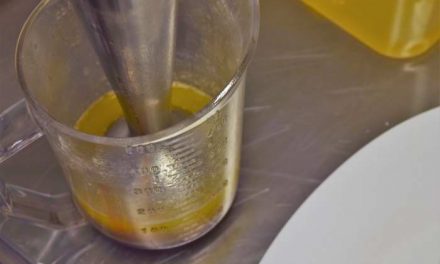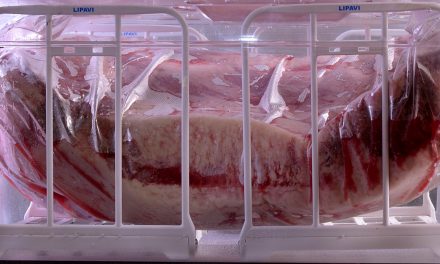Many of us know that August Escoffier is usually considered to be the originator of classical French cuisine. This causes a certain amount of confusion. Actually, Escoffier’s role was more to “codify” a style/method/philosophy of cooking that already existed. Most people and even most chefs have never heard of Marie-Antoine Carême. Carême was a (male) celebrity chef long before Puck, Flay, Lagasse et al, even before Escoffier.
Gastronomic historians consider Carême to be the FIRST celebrity chef. Of course, the global, 24/7 media machine that we have today didn’t exist in the 18th and 19th centuries. A chef famous in Paris could be totally unknown in Lyon, less than a hundred miles away.
Born in 1784 and the youngest of 16 children, Carême’s parents abandoned him in 1794. It was the height of the French Revolution and things were tough. Carême worked as an unskilled laborer in a neighborhood café and then apprenticed in a pastry shop at the tender (but typical) age of 14. Eventually, he became quite well known for his creativity, and himself codified traditional recipes in literature. Carême died of respiratory illness at the age of 48–what we call emphysema. Stoves were charcoal fired back then, and chefs were routinely exposed to the toxic fumes–rather like if we stood over an open barbecue all day. Chef Carême died eleven years before Escoffier was even born (1846– 1935).
Many recipes and methods that Escoffier is given credit for were already in use in Carême’s time, including the so-called “classical sauces”– Béchamel, Velouté, Espagnole, Sauce Tomat, and even Hollandaise. For that matter, Carême didn’t just make them up–somebody taught them to him too, we just don’t know exactly who. So what? I’ll tell you so what.
Chefs are a proud lot, especially acclaimed ones. That’s not news. And I’d be willing to wager that Carême would have taken a critical, dim view of Escoffier’s interpretations of recipes that Carême had mastered. And whoever taught Carême would probably have felt much the same way about how THEIR recipes were being corrupted and bastardized by Carême. Can’t you just imagine the clucking, the rolling of the eyes, the shaking of the head as Carême read one of Escoffier’s culinary treatises? I can almost hear him sputtering (in French) “That’s not a REAL, AUTHENTIC, TRADITIONAL demi-glace!” So, what’s the point?
Humans are a funny lot. We act like it wasn’t only Moses who brought chiseled tablets down the mountain, revealing unalterable truth, never to be readjusted. We imagine an objective standard against which everything can be compared, evaluated, and critiqued. We indulge ourselves in comments like “That’s not a TRUE Scallopini.” After all–once you introduce sous vide into preexisting recipes, you have abandoned tradition from the get-go. Maybe someday people will look at a paper lined basket and say “That’s not a TRADITIONAL Hot Pocket, and I KNOW, because my Nonna learned how to make them from HER mother, and THAT’S not the way they were made back in the OLD country.” And who puts KETCHUP on a HOT DOG?
Every chef leans one way or another when it comes to naming/describing menu items. Americans like to name dishes after exotic places, events and celebrities, preferably foreign. I have noticed that contemporary French and Italian restaurants opt for listing the components of menu items, rather than give them proper names. Hardly any capital letters to be seen. “Wellington” becomes supplanted by “en croute” (in a crust). There’s less controversy/confusion that way. Waiters don’t have to answer (and bungle) the question “what’s in it?”or “how do you pronounce this?” You don’t have to call it Hollandaise sauce–it’s perfectly fine to just call it a “lemony emulsion.”
So, the next time you make something, you can avoid looking up (or faking) how to spell a word in a foreign language; when to use “ à la,” instead of “ à la façon du,” etc. And when you see something called something that doesn’t exactly duplicate what you understood the dish to be, ask yourself “Is he/she trying to get me to buy this?” Because, if they’re not, well, it really doesn’t matter what they call it. If they say it’s osso buco, osso buco it is! I suppose it should have a bone with a hole in it, because that is the literal translation. Nothing about veal, or the appropriate sauce. Everything is real, nothing is fake. Authenticity is a red herring–just ask Carême.




